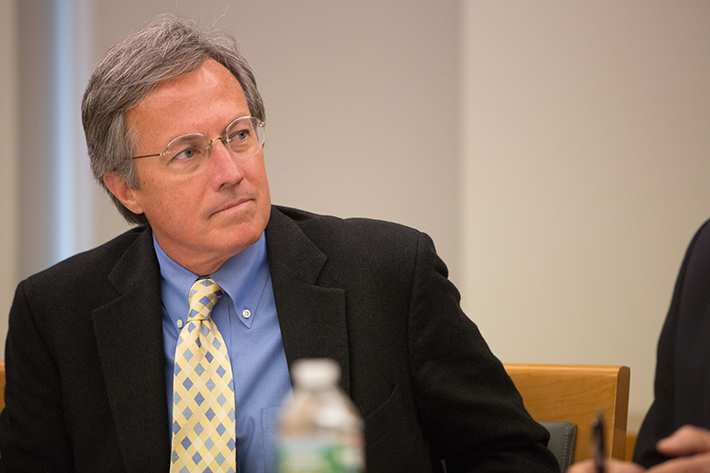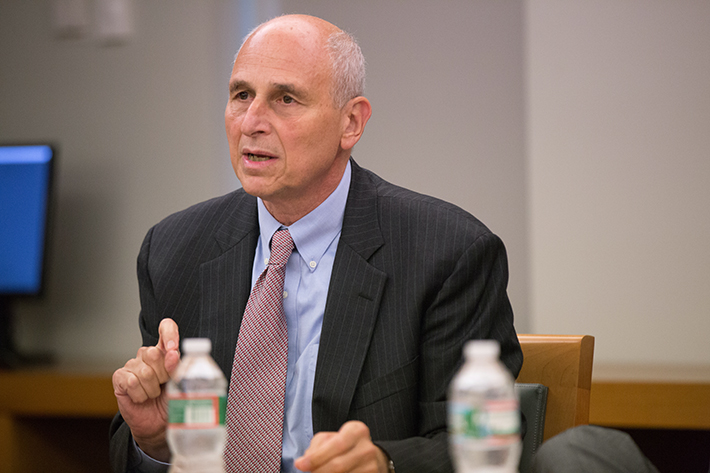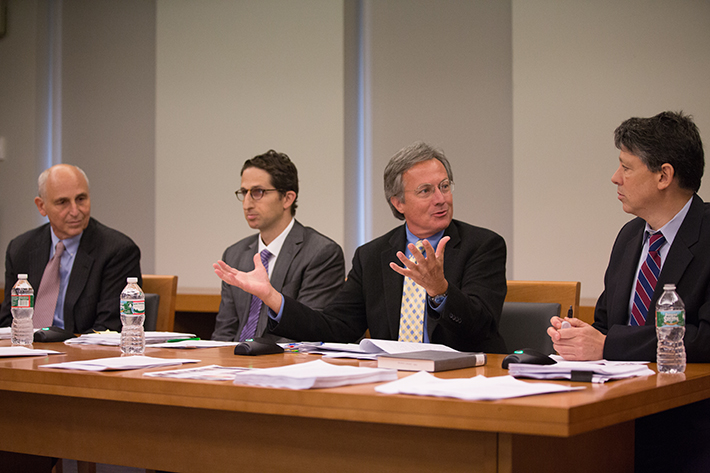The National Security Archive released Wednesday recently unsealed transcripts from the grand jury proceeding of Julius and Ethel Rosenberg, the Communist Party supporters executed in 1953 for conspiracy to commit espionage for the Soviet Union.
The documents include key testimony from Ms. Rosenberg’s brother David Greenglass that may show he committed perjury, according to case experts Archive Director Tom Blanton, legal scholar Brad Snyder, attorney David Vladeck and Rosenberg historian and journalist Steve Usdin.
In the transcript, Mr. Greenglass testified before the grand jury that he “never spoke” to Ms. Rosenberg about sharing secrets regarding the atomic bomb with the Soviet Union or any involvement in espionage.
This revelation contradicts his later damning trial testimony of Ms. Rosenberg that led to her execution. It casts her as a willing participant who typed up the notes that were passed to Soviet spies.
According to Rosenberg case experts, Mr. Greenglass’ testimony against his sister was an effort to protect his wife, Ruth Greenglass, who was possibly a Soviet spy.
“Here you have a guy, David Greenglass, who sent his sister to the electric chair to save himself and his wife based on testimony that was most likely false,” Mr. Usdin said at the Archive press briefing held at the George Washington University last Wednesday.
“What are the mechanics of David Greenglass making up the story about Ethel typing up the notes?”
Mr. Usdin, the Archive, the American Historical Association, the American Society of Legal History, the Organization of American Historians and the Society of American Archivists co-petitioned the United States District Court of the Southern District of New York for the documents.
Mr. Vladeck represented the petitioners in the litigation to unseal the documents. The petition and trial documents are available online.
Archive Director Tom Blanton quoted Martin Luther King Jr. when speaking of the significance of the formerly secret documents. He said they are a reminder that "the arc of the moral universe is long, and it bends toward justice."
Mr. Greenglass was a machinist in Los Alamos, N.M. for the Manhattan Project, the U.S. operation to develop the atomic bomb. He testified at the Rosenberg trial that Mr. Rosenberg convinced him to share details of the weapon while Ms. Rosenberg typed up notes, which were passed onto the Russians through his friend Harry Gold, a chemist.
Ruth Greenglass corroborated her husband’s story.
Because of their cooperation, Ms. Greenglass was not indicted and Mr. Greenglass received a 15-year sentence, of which he served 10 years.
The Rosenbergs refused to admit to wrongdoing. They were convicted of espionage and executed in the electric chair at Sing Sing in 1953.
However, the testimony against Ms. Rosenberg has long been called into question. One reason is that Ms. Greenglass worked as a legal stenographer, so it is more likely she acted as typist, according to Mr. Usdin.
Sam Roberts, a New York Times journalist, reaffirmed the theory in the late 1990s when he interviewed Mr. Greenglass for a book about his role in the case, “The Brother: The Untold Story of the Rosenberg Case.”
In the book, Mr. Greenglass calls his testimony into question. He said he believes his wife did the typing but can’t be sure. The newly released documents support the claim.
“This is the last important evidence we’re likely to ever have on the Rosenberg case,” Mr. Usdin said.
Mr. Snyder said that given the discrepancies in Mr. Greenglass’ testimony, the prosecuting lawyers were probably aware that the testimony was false or misleading.
“It was a sad episode for the U.S. justice system and did not set a good precedent for how we prosecute cases like this,” Mr. Snyder said.
Attorney David Vladeck, who led the litigation team that filed for release of the documents, said the arrest of Ethel Rosenberg was a ploy to get Julius Rosenberg to confess. Unfortunately, the plan did not work.
Mr. Vladeck and Mr. Snyder added that the Department of Justice, and Attorney General Herbert Brownell were using Ms. Rosenberg as leverage to get Mr. Rosenberg to confess, but they had no evidence that she committed “overt acts.”
When he refused to confess they were both convicted.
“[Brownell’s] line was that, ‘We never expected him to call our bluff,’” Mr. Vladeck said.
According to Dr. Blanton, the documents are proof that history is alive.
“This case is all about bending the arc, correcting the history, hearing the warning about prosecutorial misconduct and unchecked government power and alerting ourselves against a black-and-white view of history,” he said.


